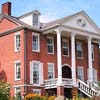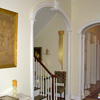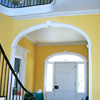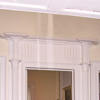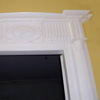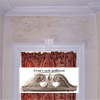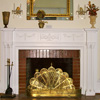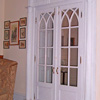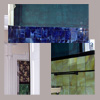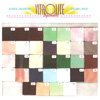When the Coffins and Hyers resided at 12 South Water Street, the families added Colonial Revival modifications to the inside of the house. The Colonial Revivial movement began in the 1870s largely in response to the American centennial and peaked in popularity between 1880 and 1940. As architectural historian, Dale Allen Gyure, notes, the style was a "physical and psychological manifestation of an ongoing relationship between the past and present" and symbolized a family’s " patriotism, taste, moral superiority, " decency, and democratic values. Colonial Revival updates usually involved changes to fireplaces and the addition of wall paneling 33.
During the Colonial Revival period, families increasingly installed modern conveniences such as indoor plumbing, electricity, and central heat in homes as new technologies became available. At the same time, a different concept of motherhood and higher standards of sanitation developed. Women in the 1920s and 1930s were expected to "enrich the home life", act as diligent homemakers, and monitor the health and safety of their children. With the introduction of electric appliances, cooking consumed less time and upper middleclass women increasingly assumed the role that cooks once held in their families. At the Hyer home, the new first floor kitchen enabled Mrs. Hyer to more easily monitor her family as the children played in the back parlor or upstairs bedrooms. Space efficiency improved for Mrs. Hyer could take deliveries through the backdoor or answer the front door when guests arrived without moving far from her primary space 34. With the increased twentieth century emphasis on sanitation, ceramic and glass tiles became a popular wall covering in lavatories, such as the 1930s era tiles still found in the bathrooms in James Hyer's house. The tiles, allegedly handcrafted in Italy at great expense, and the brilliant Art Deco color made a tasteful social and fashion statement about the Hyers to household guests. The Hyers not only installed the latest modern conveniences in their home but selected the highest quality products for even bathing areas 35.
Rumored Architect
Mystery surrounds the architect whom Livingston employed. According to local legend, Livingston hired Barnabas Waterman (1776 – 1839), a native of Bridgewater, Massachusetts. Waterman established a practice in Hudson, New York in 1804, a town across the river from Athens. Known as a "master-builder", a term used to describe architects before the development of technical standards, Waterman appears to have been moderately successful as his partnership won the contract to build the county courthouse in 1834 36 . Waterman’s prominent role in the Hudson political community, including commissioner responsible for road paving (1815), assistant alderman (1813), alderman (1814-1817), and supervisor (1823) – may have brought him into contact with Livingston, although a document which verifies Waterman as Livingston’s architect has not yet been uncovered 37 . Details from the James Vanderpool house in Kinderhook, New York, a building once attributed to Waterman, are similar to features of 12 South Water Street 38 .
-------------------------
33.Gyure, Dale Allen. The Colonial Revival: A Review of the Literature. http://etext.lib.virginia.edu/colonial: pg. 2-6. The Colonial Revival movement resurged again in the 1980s but did not impact the house at 12 South Water Street.
34.Clark 157-159.
35.The vivid colors of glass tiles, from cobalt blue to orchid to fire engine red, made them a common material in buildings during the Art Deco movement of the twenties and thirties. Vitrolite
Discussion with Mark Hyer on March 22, 2005. Although the sink and tubs were later updated in the fifties by his parents, the tiles were maintained because of their great value and excellent condition. Mark believes, but cannot document, that the tiles were handcrafted. Although Italian tiles were unusual in local homes, some people updated bathrooms with other less expensive glass tiles. In the 1920s and 1930s, Vitroli, Carrara, and Sani-onyx were trade names for glass tiles commonly used on the outsides of restaurants, storefronts, and movie theaters as well as within homes for updating even "modest" kitchens and bathrooms.
36.Right and Left are relative to standing on portico facing the front door.
37.Piwonka, Ruth. Roderic H. Blackburn. A Visible Heritage, Columbia County, New York. (Kinderhook: Columbia County Historical Society, 1977: 69). Mesick-Cohn-Waite Architects. James Vanderpoel House Structure Report. (Kinderhook: Columbia County Historical Society, 1989:22-23).
38.Mesick-Cohen-Waite Architects, 22-23.
